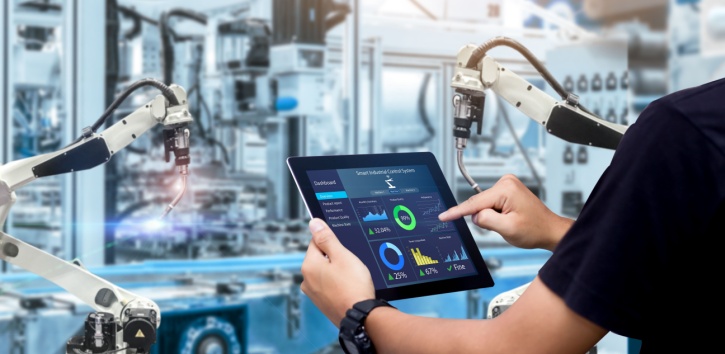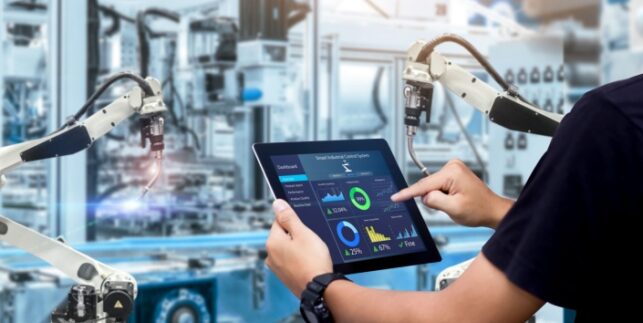Empowering Manufacturing with Energy Management: The Role of Digital Platforms

Energy consumption is one of the most significant costs in the manufacturing industry. That is why manufacturers are shifting their focus to reducing their energy consumption. This is critical for both financial and environmental reasons.
However, despite shifting their focus to energy consumption, many manufacturers lack the tools they need to monitor and manage it effectively. Digital platforms can help bridge this gap by providing real-time visibility into energy consumption and identifying events that impact energy efficiency. By connecting machines, people, sensors and processes, manufacturers can optimize their production processes and reduce energy consumption and costs with ease.
The Power of Real-Time Data
A key way to tackle the issue of wasted energy in manufacturing is by having access to real-time data on actual energy consumption. Manufacturing managers need to have access to continually updated real-time data gathered from machines, sensors, information systems, and people to monitor, manage, and optimize energy usage continually. Comprehensive visibility of all shop-floor data in real-time is not just an effective way to manage energy but is a cornerstone of Industry 4.0.
The integration of digital platforms that utilize real-time data can empower production teams to make smarter decisions in real-time. A user-friendly platform like Matics enables manufacturers to leverage shop-floor data by visually showing energy consumption in real-time, and providing triggers and alerts when consumption deviates from the norm or reaches pre-set limits. This lets key stakeholders quickly identify issues and take corrective action before they impact the shift, leading to significant energy and cost savings.
Connection of the Frontline to Consumption
Frontline workers play a crucial role in energy management in manufacturing, as they are the ones directly involved in the production process and are the ones most likely to identify potential areas of energy waste. However, these workers are often not fully empowered to make decisions that can optimize energy consumption.
Connecting the frontline through digital platforms provides frontline workers with real-time data and insights into events as they occur. This enables production teams to quickly identify and address inefficiencies in the production process. For example, if a machine is consuming more energy than usual, a relevant stakeholderwho has access to this information via a digital platform can be alerted immediately. They can choose to take corrective action or trigger an automated work process directly through their app, such as issuing testing or sending maintenance.
Digital platforms that continually aggregate data from various sources, such as machines, sensors, and information systems, can provide a clear and comprehensive picture of the production process. This helps avoid miscommunication and inefficiencies that can lead to energy waste. By involving frontline workers in the energy management process and valuing their insights, manufacturers can create a culture of continuous improvement and sustainability.
Case Study: Injection Molding in Plastics Manufacturing
Let’s consider a consumer goods company that manufactures plastic containers using injection molding. Injection molding is one of the most energy-intensive processes in the plastics industry, with a process load of between 0.9 – 1.6 kWh/kg, compared to other processes such as extrusion (0.4 – 0.7 kWh/kg) and extrusion blow molding (0.8 – 1.3 kWh/kg).
To reduce their energy consumption, the company needs to focus on optimizing their injection molding process. One way to achieve this is by leveraging process automation and optimizing cycle times. By automating the process, the company can improve speed and reliability while reducing energy usage. Process automation also reduces the chances of errors and enables rapid responses to issues.
Implementing a smart digital platform on their shop floor can further enhance energy savings. For example, if the injection molding machine experiences a sudden increase in energy consumption, the platform can immediately notify the manager. The manager can then investigate the issue and take corrective action, such as adjusting the machine settings or performing maintenance.
In addition to real-time monitoring and alerts, the digital platform can also provide valuable insights into the company’s energy consumption patterns. By analyzing this data, the company can identify opportunities for further energy savings, such as optimizing production schedules or investing in more energy-efficient equipment.

Changing the way people work in factories
Request a DemoEmpowering Production Teams and Reduce Energy Consumption with Matics’ Digital Platform
As the importance of managing and reducing energy consumption continues to rise, the role digital platforms play in managing this consumption will rise as well. Manufacturers need to ensure that they have the right digital platforms integrated on their shop-floor in order to retain real-time visibility into energy usage. This in turn will make it easy to identify historical benchmarks and set thresholds, as well as provide critical alerts in real-time to relevant stakeholders.
By connecting the entire production floor, smart digital platforms like Matics enable manufacturers to reduce costs, improve efficiency, and create a more sustainable future.
As the manufacturing industry continues to grow, the adoption of energy management solutions will become increasingly important for companies looking to remain competitive and environmentally responsible.




